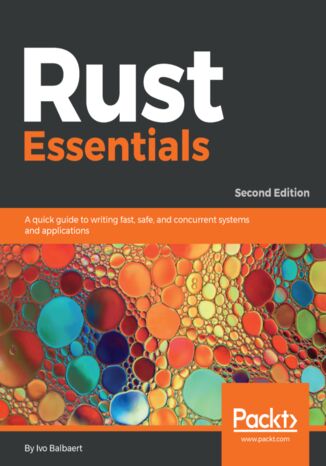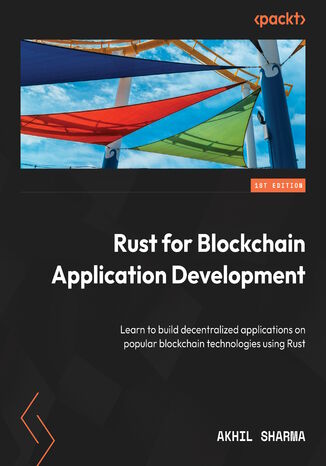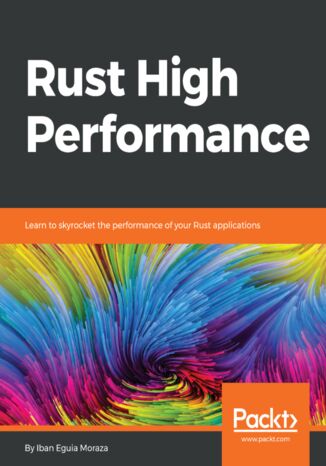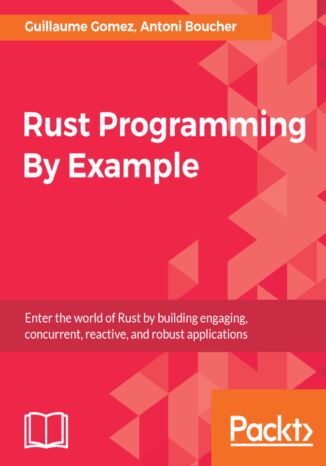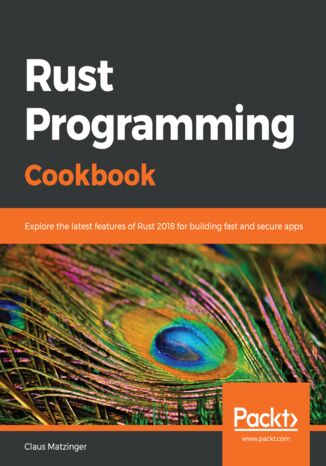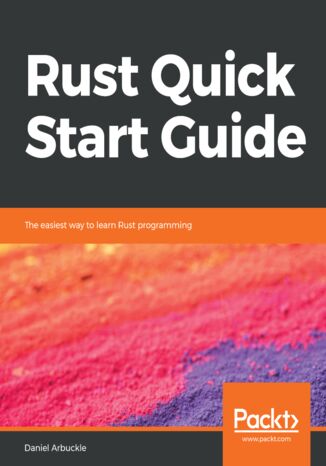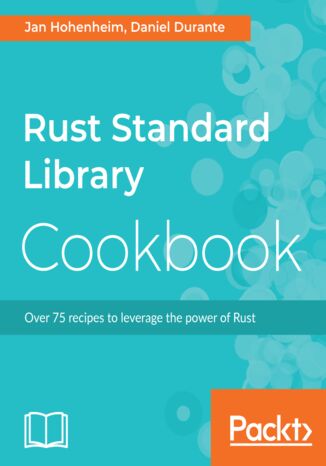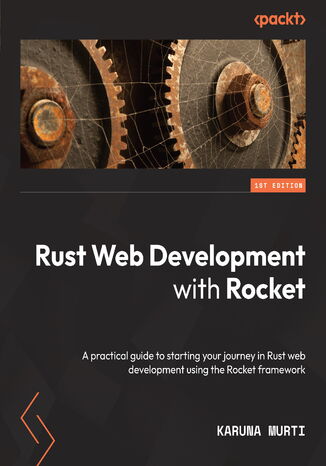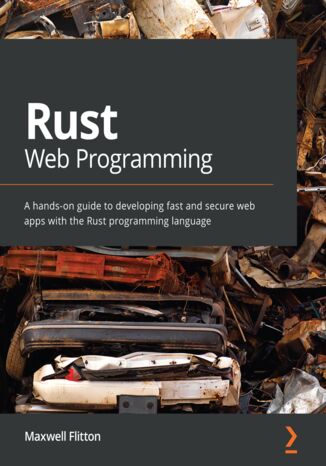Категорії
-
- Біткойн
- Ділова жінка
- Коучинг
- Контроль
- Електронний бізнес
- Економіка
- Фінанси
- Фондова біржа та інвестиції
- Особисті компетенції
- Комп'ютер в офісі
- Комунікація та переговори
- Малий бізнес
- Маркетинг
- Мотивація
- Мультимедійне навчання
- Нерухомість
- Переконання та НЛП
- Податки
- Соціальна політика
- Порадники
- Презентації
- Лідерство
- Зв'язки з громадськістю
- Звіти, аналізи
- Секрет
- Соціальні засоби комунікації
- Продаж
- Стартап
- Ваша кар'єра
- Управління
- Управління проектами
- Людські ресурси (HR)
-
- Architektura i wnętrza
- Безпека життєдіяльності
- Biznes i Ekonomia
- Будинок та сад
- Електронний бізнес
- Ekonomia i finanse
- Езотерика
- Фінанси
- Особисті фінанси
- Бізнес
- Фотографія
- Інформатика
- Відділ кадрів та оплата праці
- Для жінок
- Комп'ютери, Excel
- Бухгалтерія
- Культура та література
- Наукові та академічні
- Охорона навколишнього середовища
- Впливові
- Освіта
- Податки
- Подорожі
- Психологія
- Релігія
- Сільське господарство
- Ринок книг і преси
- Транспорт та спедиція
- Здоров'я та краса
-
- Офісні застосунки
- Бази даних
- Біоінформатика
- Бізнес ІТ
- CAD/CAM
- Digital Lifestyle
- DTP
- Електроніка
- Цифрова фотографія
- Комп'ютерна графіка
- Ігри
- Хакування
- Hardware
- IT w ekonomii
- Наукові пакети
- Шкільні підручники
- Основи комп'ютера
- Програмування
- Мобільне програмування
- Інтернет-сервери
- Комп'ютерні мережі
- Стартап
- Операційні системи
- Штучний інтелект
- Технологія для дітей
- Вебмайстерність
-
- Антології
- Балада
- Біографії та автобіографії
- Для дорослих
- Драми
- Журнали, щоденники, листи
- Епос, епопея
- Нарис
- Наукова фантастика та фантастика
- Фельєтони
- Художня література
- Гумор, сатира
- Інше
- Класичний
- Кримінальний роман
- Нехудожня література
- Художня література
- Mity i legendy
- Лауреати Нобелівської премії
- Новели
- Побутовий роман
- Okultyzm i magia
- Оповідання
- Спогади
- Подорожі
- Оповідна поезія
- Поезія
- Політика
- Науково-популярна
- Роман
- Історичний роман
- Проза
- Пригодницька
- Журналістика
- Роман-репортаж
- Romans i literatura obyczajowa
- Сенсація
- Трилер, жах
- Інтерв'ю та спогади
-
- Археологія
- Bibliotekoznawstwo
- Кінознавство / Теорія кіно
- Філологія
- Польська філологія
- Філософія
- Finanse i bankowość
- Географія
- Економіка
- Торгівля. Світова економіка
- Історія та археологія
- Історія мистецтва і архітектури
- Культурологія
- Мовознавство
- літературні студії
- Логістика
- Математика
- Ліки
- Гуманітарні науки
- Педагогіка
- Навчальні засоби
- Науково-популярна
- Інше
- Психологія
- Соціологія
- Театральні студії
- Богослов’я
- Економічні теорії та науки
- Transport i spedycja
- Фізичне виховання
- Zarządzanie i marketing
-
- Безпека життєдіяльності
- Історія
- Дорожній кодекс. Водійські права
- Юридичні науки
- Охорона здоров'я
- Загальне, компендіум
- Академічні підручники
- Інше
- Закон про будівництво і житло
- Цивільне право
- Фінансове право
- Господарське право
- Господарське та комерційне право
- Кримінальний закон
- Кримінальне право. Кримінальні злочини. Кримінологія
- Міжнародне право
- Міжнародне та іноземне право
- Закон про охорону здоров'я
- Закон про освіту
- Податкове право
- Трудове право та законодавство про соціальне забезпечення
- Громадське, конституційне та адміністративне право
- Кодекс про шлюб і сім'ю
- Аграрне право
- Соціальне право, трудове право
- Законодавство Євросоюзу
- Промисловість
- Сільське господарство та захист навколишнього середовища
- Словники та енциклопедії
- Державні закупівлі
- Управління
-
- Африка
- Альбоми
- Південна Америка
- Центральна та Північна Америка
- Австралія, Нова Зеландія, Океанія
- Австрія
- Азії
- Балкани
- Близький Схід
- Болгарія
- Китай
- Хорватія
- Чеська Республіка
- Данія
- Єгипет
- Естонія
- Європа
- Франція
- Гори
- Греція
- Іспанія
- Нідерланди
- Ісландія
- Литва
- Латвія
- Mapy, Plany miast, Atlasy
- Мініпутівники
- Німеччина
- Норвегія
- Активні подорожі
- Польща
- Португалія
- Інше
- Przewodniki po hotelach i restauracjach
- Росія
- Румунія
- Словаччина
- Словенія
- Швейцарія
- Швеція
- Світ
- Туреччина
- Україна
- Угорщина
- Велика Британія
- Італія
-
- Філософія життя
- Kompetencje psychospołeczne
- Міжособистісне спілкування
- Mindfulness
- Загальне
- Переконання та НЛП
- Академічна психологія
- Психологія душі та розуму
- Психологія праці
- Relacje i związki
- Батьківство та дитяча психологія
- Вирішення проблем
- Інтелектуальний розвиток
- Секрет
- Сексуальність
- Спокушання
- Зовнішній вигляд та імідж
- Філософія життя
-
- Біткойн
- Ділова жінка
- Коучинг
- Контроль
- Електронний бізнес
- Економіка
- Фінанси
- Фондова біржа та інвестиції
- Особисті компетенції
- Комунікація та переговори
- Малий бізнес
- Маркетинг
- Мотивація
- Нерухомість
- Переконання та НЛП
- Податки
- Соціальна політика
- Порадники
- Презентації
- Лідерство
- Зв'язки з громадськістю
- Секрет
- Соціальні засоби комунікації
- Продаж
- Стартап
- Ваша кар'єра
- Управління
- Управління проектами
- Людські ресурси (HR)
-
- Антології
- Балада
- Біографії та автобіографії
- Для дорослих
- Драми
- Журнали, щоденники, листи
- Епос, епопея
- Нарис
- Наукова фантастика та фантастика
- Фельєтони
- Художня література
- Гумор, сатира
- Інше
- Класичний
- Кримінальний роман
- Нехудожня література
- Художня література
- Mity i legendy
- Лауреати Нобелівської премії
- Новели
- Побутовий роман
- Okultyzm i magia
- Оповідання
- Спогади
- Подорожі
- Поезія
- Політика
- Науково-популярна
- Роман
- Історичний роман
- Проза
- Пригодницька
- Журналістика
- Роман-репортаж
- Romans i literatura obyczajowa
- Сенсація
- Трилер, жах
- Інтерв'ю та спогади
-
- Філософія життя
- Міжособистісне спілкування
- Mindfulness
- Загальне
- Переконання та НЛП
- Академічна психологія
- Психологія душі та розуму
- Психологія праці
- Relacje i związki
- Батьківство та дитяча психологія
- Вирішення проблем
- Інтелектуальний розвиток
- Секрет
- Сексуальність
- Спокушання
- Зовнішній вигляд та імідж
- Філософія життя
Windows applications are everywhere, from basic intranet applications to high-traffic public APIs. Their prevalence underscores the importance of combining the same tools and experience for managing a modern containerized application with existing critical Windows applications to reduce costs, achieve outstanding operational excellence, and modernize quickly. This comprehensive guide to running and managing Windows containers on AWS looks at the best practices from years of customer interactions to help you stay ahead of the curve.Starting with Windows containers basics, you’ll learn about the architecture design that powers Amazon ECS, EKS, and AWS Fargate for Windows containers. With the help of examples and best practices, you’ll explore in depth how to successfully run and manage Amazon ECS, EKS, and AWS Fargate clusters with Windows containers support. Next, the book covers day 2 operations in detail, from logging and monitoring to using ancillary AWS tools that fully containerize existing legacy .NET Framework applications into containers without any code changes. The book also covers the most common Windows container operations, such as image lifecycle and working with ephemeral hosts.By the end of this book, you’ll have mastered how to run Windows containers on AWS and be ready to start your modernization journey confidently.
Wspólny cel to za mało, by znaleźć wspólny język. Druga część trylogii o Dolinie Mroku. Udul - wojownik z Gildii Hordów, i Gret Orin - miejscowy arystokrata, wyruszają na daleką północ, by rozszyfrować tajemnicę grycht i uwolnić mieszkańców Dolin Gruaronu od napadów krwiożerczych istot. Poza wspólnym celem dzieli ich wszystko i każda spędzona razem godzina uświadamia im to coraz mocniej. Gdy okazuje się, że za Gretem został wysłany mściciel, a Udul zaczyna wątpić w dobre intencje swoich mistrzów, obaj nie mają już odwrotu.
Runy i runiczne pomniki słowiańskie
UWAGA! e-book jest skanem zapisanym w formacie PDF. Plik pdf uniemożliwia przeszukiwanie i kopiowanie tekstu. Cenne opracowanie dotyczące run w ogólności, a run słowiańskich w szczególności. Autor zajmuje się następującymi zagadnieniami: O runach i pomnikach runicznych w ogóle. Zapatrywania na pochodzenie pisma runicznego. Zdania o celu pisma runicznego. Rozbiór pisma runicznego. Futhorki. Stosunek futhorków do siebie. Zmiany futhorka dłuższego. Ogólny rozwój pisma runicznego. Futhork angielski. Kształt run. Rozmaite formy run. Runy z Helsingland. Runy wiązane. Runy gałązkowe i tajemne. Różne właściwości pisma runicznego. Łączenie wyrazów. Kierunek pism. Interpunkcja. Linie obwódkowe. Ornamentacja. Na jakich przedmiotach umieszczano runy. Treść i układ napisów runicznych. O używaniu pisma runicznego i sposobie pisania. Źródła poznania run. Runiczne pomniki słowiańskie. Pomniki uznane mylnie za runiczne. Hełmy styryjskie. Czernobóg z Ramherdze. Urna gdańska. Czara złota z Szeni-Miklos w Siedmiogrodzie. Falsyfikaty. Kamienie z Nowych Strzelec. Bałwanki prylwickie. Pomniki runiczne mylnie za słowiańskie uważane. Napis na chorągwi pruskiej. Napisy na monecie i pieczątce litewskiej. Pieniążek w Czechach znaleziony. Grot kowelski. Pomniki runiczne wątpliwego pochodzenia. Dwa groty z Grunówka. Nóż z Grunówka. Siekierka z Biezdrowa. Urna kobielicka. Rzeczywiste pomniki słowiańskie. Swastyka. Pomniki polskie. Brakteat z Wapna. Medal krakowski. Figurka lednicka. Kamienie mikorzyńskie. Pomniki czeskie. Nagrobek w Skalsku. Urna drahelczycka. Pomnik słowacki: Granicznik bodiński. Pomniki rosyjskie. Urna alekanowska. Skorupy urn alekanowskich. Pomnik ruski: Urna z runą gałązkową. Runy słowiańskie. Kwestia run słowiańskich rozstrzygnięta. Rozpowszechnienie pisma runicznego u Słowian. Rozbiór run słowiańskich. Runy zwyczajne i pojedyncze. Runy gałązkowe. Liczby runiczne. Runy gałązkowe Skrócenia wyrazów. Łączenie wyrazów. Znaki diakrytyczne. Pismo odwrotne. Znaki symboliczne. Pochodzenie run słowiańskich. Kiedy Słowianie zaczęli używać pisma runicznego? Kiedy Słowianie przestali używać pisma runicznego?
Rupiec Kopeć Był raz pewien biedak, który miał ładną córkę. Zdarzyło mu się mówić z królem, więc chcąc się pokazać, jaki to on wielki, rzecze do króla: — Ja mam córkę, która umie prząść złoto ze słomy. A król mu na to: — O, to sztuka, która mi się bardzo podoba. Jeżeli twoja córka jest tak zręczną, jak mówisz, to przyprowadź ją jutro do mego pałacu, a wystawię ją na próbę. Gdy dziewczyna przyszła, król zaprowadził ją do izby pełnej słomy, dał jej kądziel, motowidło i rzekł: — Weź się do roboty, a jeżeli przez całą noc do jutrzejszego rana nie uprzędziesz złota z tej słomy, to musisz umrzeć! Co powiedziawszy, zamknął komórkę własnoręcznie, ona zaś pozostała sama. Siedzi biedna córka ambitnego ojca i nie wie, jak ma życie ocalić. Bo nie miała przecie najmniejszego pojęcia, jak się robi złoto ze słomy. Jej niepokój stawał się co raz większy, aż na koniec zaczęła płakać. Na to drzwi się otworzyły znienacka i wszedł mały człeczynka ze słowami: — Dobry wieczór panieneczce, o cóż to panienka tak płacze? — Ach! — odparło dziewczę — mam uprząść złoto ze słomy, a ja tego nie umiem. [...]Jacob i Wilhelm GrimmJacob Grimm ur. 4 stycznia 1785 w Hanau, zm. 20 września 1863 w Berlinie oraz Wilhelm Grimm ur. 24 lutego 1786 w Hanau, zm. 16 grudnia 1859 w Berlinie Najważniejsze dzieła: kolekcjonowany od roku 1806 a publikowany od 1812 zbiór baśni, bajek ludowych, podań i opowieści Bracia Grimm jako pierwsi zapisywali ludowe baśnie i podania w formie bliskiej tej, w jakiej zostały one opowiedziane, powstrzymując się od literackiego upiększania materiału. Można ich zatem uznać za pionierów badań etnograficznych, mimo że nie prowadzili badań terenowych, lecz zapraszali do swojego mieszkania osoby opowiadające baśnie. Zbieraniem materiału zajmował się głównie Jacob, natomiast Wilhelm nadawał tekstom ostateczny kształt literacki. Najbardziej znane utwory ze zbioru to Królewna Śnieżka, Kopciuszek czy Piękna i Bestia. Bracia Grimm są również autorami wielotomowego słownika języka niemieckiego (Deutsches Wörterbuch). Jacob jest odkrywcą "prawa Grimma" w językoznawstwie, dotyczącego rozwoju praindoeuropejskich spółgłosek w językach germańskich i sąsiednich. Kupując książkę wspierasz fundację Nowoczesna Polska, która propaguje ideę wolnej kultury. Wolne Lektury to biblioteka internetowa, rozwijana pod patronatem Ministerstwa Edukacji Narodowej. W jej zbiorach znajduje się kilka tysięcy utworów, w tym wiele lektur szkolnych zalecanych do użytku przez MEN, które trafiły już do domeny publicznej. Wszystkie dzieła są odpowiednio opracowane - opatrzone przypisami oraz motywami.
Rupiecie to zbiór nowel Marii Rodziewiczówny, których akcja toczy się na Kresach Wschodnich na przełomie XIX i XX wieku. Dzięki epickiemu talentowi autorki odkrywamy świat już nieistniejący, będący częścią naszej bogatej i złożonej historii. Bohaterowie opowieści są jak zawsze u Rodziewiczówny osobami z krwi i kości. Bywają dobrzy albo źli, kochają albo nienawidzą, często nie potrafiąc znaleźć swego miejsca w świecie. Zbiór zawiera utwory: Rupiecie, Triumfator, Kamienie, Tutejszy, Tak zwani Głupi, Ciotka, Lamus, Jan Borucki, Bajka o głupim Marcinie, Hryc, Bagno, Wołowy czerep i Dobra służba.
Zbiór nowel znanej polskiej pisarki schyłku XIX wieku i okresu międzywojennego, zawierający utwory: Rupiecie. Triumfator. Kamienie. Tutejszy. Tak zwani Głupi. Ciotka. Lamus. Jan Borucki. Bajka o Głupim. Marcinie. Hryc. Bagno. Wołowy Czerep. Dobra służba.
Wersja dwujęzyczna polsko rosyjska. Tekst - : polski / . Fragment: Nad jeziorem, w dzikiej głuszy, / Mnich jakiś z wygód wyzuty, / Wśród postu modlitw pokuty, / Szukał zbawienia dla duszy. / W tém, lekka jak błyskawica, / Bielsza od świéżego śniegu / Naga wychodzi dziewica, / I milczkiem siadła u brzegu. / Wlepiła wzrok w pustelnika / Mokry włos pieszcząc u ręki. / Starca dreszcz nagły przenika, / Drży i patrzy na jéj wdzięki A co było dalej? Jak postąpił pustelnik? Tego dowiemy się po przeczytaniu całego utworu.
To po prostu zwykłe wiersze, Chociaż trochę romantyczne, Trochę też sentymentalne, I po części tez liryczne. Temat zwykły i niezwykły, Czy oddadzą prawdę słowa? Bo w tomiku tym po prostu, O rusałkach będzie mowa. Chociaż szat już z mgły nie noszą, A ich głów nie zdobi kwiecie, To wciąż żyją między nami, Wciąż rusałki są na świecie. Dosyć w życiu mamy stresu, Świat jest pełen ludzkiej złości, Ale przyda się każdemu, Chociaż gram romantyczności. Postęp zbiera dzisiaj wszędzie, Pełną gębą swoje żniwo: Kawa jest bez kofeiny, I bez alkoholu piwo. I w poezji też jest postęp, Choć bez ognia nie ma dymu, Dziś królują białe wiersze, Dzisiaj wiersze są bez rymu. Lecz ten tomik, nie jest taki. Tutaj rymy to podstawa. Bo rymować wiersz się musi, Stara prawda, jasna sprawa. Do lektury więc zachęcam, Bo brak serca dziś poruszeń, Życzę wszystkim wielu doznań, I głębokich, szczerych wzruszeń.
Kajetan Abgarowicz pseudonim Abgar Sołtan (1856-1909) polski dziennikarz, powieściopisarz i nowelista pochodzenia ormiańskiego, reprezentant gawędy szlacheckiej. Twórczość Abgarowicza mieściła się w nurcie popularnej beletrystyki romansowej i przygodowej. Wśród współczesnych mu czytelników cieszyła się powodzeniem. Abgarowicz interesował się życiem Rusinów i przyczynił się do popularności kultury huculskiej w Polsce. Niniejsza publikacja opowiada właśnie o życiu i kulturze Rusinów, a podtytuł, jaki autor nadał temu utworowi Obrazek z życia Rusinów galicyjskich, doskonale oddaje ducha i zawartość powieści.
“Wyobraźmy sobie, co by się stało, gdyby na jednym z przejść granicznych celnicy zamiast tirów z tanimi podróbkami markowych ciuchów typu adidos i nikhe skonfiskowali tony podrobionych i fejkowych klasyków: Dostojevzsky, Toystoy, Toorgeneff . Zbiór opowiadań autorstwa słowackiego pisarza Daniela Majlinga pod tytułem “Ruska klasyka” szybko stał się bestsellerem. Już niedługo te piekielnie dowcipne podróby trafią do rąk polskich czytelników. Ruska klasyka, just do it!” *** Daniel Majling studiował na Wyższej Szkole Sztuk Scenicznych w Bratysławie po ukończeniu której otrzymał angaż w teatrze dramatycznym w Nitrze, gdzie pracował jako dramaturg. Od 2014 roku jest dramaturgiem sceny narodowej w Teatrze Narodowym w Bratysławie. Zasłynął jako twórca kultowego autorskiego komiksu “Rudo” który pierwotnie ukazał się w Czechach. “Ruska klasyka” to jego debiut prozatorski, za który otrzymał nagrodę publiczności Anasoft Litera, najważniejszej literackiej nagrody na Słowacji. *** Weronika Gogola jest absolwentką ukrainoznawstwa na Uniwersytecie Jagiellońskim. Autorka nagrodzonej Nagrodą Conrada powieści "Po trochu" oraz książki o Słowacji "UFO nad Bratysławą". Tłumaczy z j. ukraińskiego i j. słowackiego. *** [FRAGMENT] Znaczna część dzisiejszej pisaniny jest jedynie imitacją tego stu pięćdziesięcioletniego okresu starego pisarstwa. O czasach współczesnych w ogóle nie da się pisać, ponieważ większość ludzi żyje dzisiaj w sposób tak banalny, że do opisania tego typu życia nikt nie potrzebuje trzystu stron powieści! Po co? Ogólne wrażenie z życia moich rówieśników można sprowadzić do felietonu. Proszę spojrzeć na dzisiejsze powieści ‒ to są anegdoty rozciągnięte na trzysta stron! Nic więcej! Hieny, które dzisiaj rozgryzają na strzępy padliny martwej literatury piszą tak, jak pisało się przed stu pięćdziesięcioma laty, tyle tylko, że my już dawno nie żyjemy w takim świecie.
Człowiek rosyjskiej mafii w Polsce lat 90. przerywa milczenie. Mówi się o niej największa mafia świata. Przy gangsterach zza Buga bledną mafiosi z Sycylii, z japońskiej yakuzy czy z kolumbijskich karteli. Jej brutalność szokuje; FBI uważa ją za największą mafijną organizację na świecie. A jaka jest prawda? Arturowi Górskiemu udało się wejść w struktury rosyjskiej mafii i namówić Nazara, rezydenta ruskiej mafii w czasach Pruszkowa i Wołomina w Polsce, na szczerą rozmowę o krwawych początkach zorganizowanej przestępczości w byłym Związku Radzieckim. Jego bohater nie miał nic do stracenia, bo pod koniec lat 90. został z Polski wypuszczony, pod warunkiem że nigdy tu nie wróci. Dziś nie miałby już po co. Ludzie z otoczenia Władimira Władimirowicza wiodą zupełnie inne życie Artur Górski - reporter, dziennikarz śledczy, korespondent wojenny, autor bestsellerowej serii "Masa o polskiej mafii", nagrodzony Bestselerem Empiku 2014 w kategorii literatura faktu. Jego doświadczenia, zebrane podczas wojen na Bałkanach, zaowocowały dwoma powieściami, opartymi na wydarzeniach autentycznych: "Gucci boys" oraz "Syn zgwałconej". W 2017 roku udało mu się - w formie książki - doprowadzić do spotkania nieprzejednanych wrogów, Moniki Banasiak i Jarosława Sokołowskiego. Tak powstała fascynująca rozmowa "Słowikowa i Masa. Twarzą w twarz". Monika Banasiak była także bohaterką kolejnej książki Górskiego - "Słowikowa o więzieniach dla kobiet". W 2018 roku autor nawiązał współpracę z najsłynniejszych polskim policjantem przykrywkowym Janem Fabiańczykiem - jej efektem był głośny tom "Majami. Zły pies". Górski specjalizuje się również w tematyce międzynarodowej przestępczości zorganizowanej oraz służb specjalnych. W 2014 roku wydał bestsellerową książkę "Pięść Dawida" o instytucjach wywiadowczych oraz oddziałach szturmowych Izraela (jednym z jego rozmówców był szef wyszkolenia Mossadu). Nieco wcześniej ukazała się pozycja "Świat tajnych służb". Obecnie Górski zajmuje się problematyką mafii w krajach byłego Związku Radzieckiego - podczas podróży na wschód udało mu się dotrzeć do wielu byłych członków grup przestępczych oraz przedstawicieli organów ścigania. Nazar M. pseudonim Niedwiedź (rocznik 1969) - kickbokser, żołnierz, uczestnik wojny w Azji Środkowej, były gangster, jeden z liderów przestępczości zorganizowanej w białoruskim Mińsku. Uczestniczył w krwawych wojnach z gangami tzw. worów w zakonie. Współpracownik najpotężniejszych szefów rosyjskiej mafii. W latach 90., po wyjeździe z Białorusi, był rezydentem grup przestępczych z byłego Związku Radzieckiego w Polsce. Pozostawał w bliskich relacjach z wieloma bossami polskiego półświatka, a jeden z szefów Pruszkowa, Andrzej K. "Pershing" był jego przyjacielem. Spędził sześć lat w polskim więzieniu za podwójne zabójstwo w obronie własnej - podczas pobytu za kratami napisał książkę "Historia opowiedziana synowi". Na jej podstawie powstał serial rosyjskiej telewizji "Brygada", który przyciągnął wielomilionową publiczność. Podczas pobytu Nazara w więzieniu, w Szczecinie został zastrzelony jego najbliższy przyjaciel - Wiktor Fiszman, rezydent białoruskiej mafii na Pomorzu Zachodnim. Sprawa ta odbiła się szerokim echem w polskich mediach. Po wyjściu na wolność Nazar zaangażował się w działalność biznesową, jednak w 2008 roku, jako persona non grata musiał opuścić Polskę. Obecnie jest agentem piłkarskim i bokserskim.
Russia pivot to (Southeast) Asia. Polityka Rosji wobec Azji Południowo-Wschodniej w XXI wieku
Niniejsza monografia naukowa jest pierwszą w literaturze polskiej, która przedstawia kompleksową analizę podjętego tematu, tym samym poszerza naszą wiedzę o współczesnej polityce zagranicznej Federacji Rosyjskiej i jej obecności na płaszczyźnie bilateralnej i multilateralnej w Azji Południowo-Wschodniej. Zawiera także informacje o próbach rosyjskich polityków w zakresie realizacji Projektu Wielkiego Partnerstwa Euroazjatyckiego. Temat pracy nie doczekał się w polskiej literaturze naukowej kompleksowej analizy. Zwrot Federacji Rosyjskiej ku Azji, w tym Azji Południowo-Wschodniej, podyktowany był i jest względami polityki zagranicznej, tzw. wektorem wschodnim, szczególnie od czasu aneksji Krymu. Ponadto ASEAN odgrywa istotną rolę w umacnianiu poczucia podmiotowości Federacji Rosyjskiej i równowagi na międzynarodowej arenie azjatyckiej, szczególnie wobec partnera chińskiego. Temat jest jak najbardziej aktualny, ponieważ analizowana polityka zagraniczna Federacji Rosyjskiej wobec Azji Południowo-Wschodniej najprawdopodobniej będzie intensywnie ewoluowała w kolejnych latach, szczególnie w kontekście pogarszających się relacji Rosji z szeroko pojmowanym Zachodem. dr hab. Robert Jakimowicz, prof. UEK Autorka prezentuje szeroki zakres przedmiotowy zagadnień będących obecnie obszarem zainteresowań innych badaczy, omawia nowe wątki dotąd nieopracowane. Aktualność tematu jest bezsprzeczna z uwagi na rosnącą siłę Chin i dużą rolę Rosji we współczesnym świecie. Należy ocenić bardzo pozytywnie postawione przez Autorkę cele i stosowanie różnorodnych narzędzi metodologicznych charakterystycznych dla odmiennych dyscyplin naukowych. Publikacja jest bardzo obszerna i dobrze udokumentowana źródłowo. Przyjęty układ pracy jest logiczny i jasny. dr hab. Mieczysław Sprengel, prof. UAM
Władza i miłość, diabelskie połączenie. Moje nazwisko to Aristow. Sprawia, że mogę wszystko. Piękni, młodzi, bogaci. Brzmi jak bajka? Tak, ale to bajka dla dorosłych Panuje opinia, że w Rosji, największym kraju na świecie, wszystko jest większe niż gdzie indziej. Historia dwojga studentów zarządzania, Mavis i Rodiona, tylko to potwierdza. Wielkie pieniądze, wielkie namiętności, wielkie tajemnice - oto codzienność tych dwojga. Nic dziwnego, bo bohaterowie nie są zwykłymi studentami. Mavis Belov to córka właściciela znanej sieci hoteli, od dziecka oswojona z paparazzimi i ze wścibską prasą, a Rodion... Rodion Aristow to prawdziwy mafijny książę, dziedzic nielegalnej fortuny, przy której nawet majątek rodziny Belovów wypada blado. Przypadkowe spotkanie Mavis i Rodiona na imprezie charytatywnej uruchamia lawinę wydarzeń, w której nie brakuje nienawiści, miłości, a nawet zbrodni... Tylko czy rzeczywiście to przypadek ich ze sobą zetknął? Porywający romans pełen sensacji, erotyki i tajemnic. Poznaj historię, która zdobyła serca niemal miliona użytkowniczek serwisu Wattpad!
Russkij jazyk w polskoj auditorii. T. 3. [Język rosyjski w polskiej szkole wyższej. T. 3]
Wchodzące w skład tomu opracowania dotyczą problemów ewolucji języka – historii i stanu współczesnego języka rosyjskiego, konfrontacji języków oraz pragmatyki językowej i translatoryki. Wyniki prac badawczych prowadzonych w tym zakresie mogą być wykorzystane na zajęciach z praktycznej nauki języka rosyjskiego, gramatyki opisowej oraz teorii i praktyki przekładu. Mogą okazać się pomocne nie tylko w samym procesie nauczania, lecz również w przygotowaniu materiałów do nauki języka. Konieczne wszak są: ciągłe modyfikacje programów nauczania, przystosowanie tematyki i treści nauczania do oczekiwań studentów, wzbogacanie ich wiedzy o języku rosyjskim rozumianym jako stale rozwijający się system, wskazanie związku języka z kulturą, życiem narodu, systemem jego wartości.
Rust is the new, open source, fast, and safe systems programming language for the 21st century, developed at Mozilla Research, and with a steadily growing community. It was created to solve the dilemma between high-level, slow code with minimal control over the system, and low-level, fast code with maximum system control. It is no longer necessary to learn C/C++ to develop resource intensive and low-level systems applications. This book will give you a head start to solve systems programming and application tasks with Rust.We start off with an argumentation of Rust's unique place in today's landscape of programming languages. You'll install Rust and learn how to work with its package manager Cargo. The various concepts are introduced step by step: variables, types, functions, and control structures to lay the groundwork. Then we explore more structured data such as strings, arrays, and enums, and you’ll see how pattern matching works.Throughout all this, we stress the unique ways of reasoning that the Rust compiler uses to produce safe code. Next we look at Rust's specific way of error handling, and the overall importance of traits in Rust code. The pillar of memory safety is treated in depth as we explore the various pointer kinds. Next, you’ll see how macros can simplify code generation, and how to compose bigger projects with modules and crates. Finally, you’ll discover how we can write safe concurrent code in Rust and interface with C programs, get a view of the Rust ecosystem, and explore the use of the standard library.
Before Rust, blockchain developers didn’t have a systems programming language that was type-safe, fast, and, at the same time, had stable and easy memory management. Rust proved to be a boon for developers and works as the perfect solution for not only blockchain and protocol development but also dApp development.Rust for Blockchain Application Development focuses on demonstrating solutions that can help blockchain developers productize decentralized applications using Rust, which is a complex language with a steep learning curve.This book starts with basic Rust language concepts and then builds on these concepts to enable you to develop your own blockchain from scratch. As you progress, you’ll learn how to build dApps on popular chains like Solana and NEAR. You’ll also be guided through creating Ethereum dApps using Foundry (Rust). Finally, you’ll develop a custom blockchain using Substrate by Parity (Polkadot). The book provides a complete 360-degree view of Rust in the blockchain ecosystem.By the end of this Rust book, you’ll have a thorough understanding of how to apply your Rust knowledge to building dApps and blockchains from scratch.
Rust High Performance. Learn to skyrocket the performance of your Rust applications
This book teaches you how to optimize the performance of your Rust code so that it is at the same level as languages such as C/C++. You'll understand and fi x common pitfalls, learn how to improve your productivity by using metaprogramming, and speed up your code. You will master the features of the language, which will make you stand out, and use them to greatly improve the efficiency of your algorithms. The book begins with an introduction to help you identify bottlenecks when programming in Rust. We highlight common performance pitfalls, along with strategies to detect and resolve these issues early. We move on to mastering Rust's type system, which will enable us to optimize both performance and safety at compile time. You will learn how to effectively manage memory in Rust, mastering the borrow checker. We move on to measuring performance and you will see how this affects the way you write code. Moving forward, you will perform metaprogramming in Rust to boost the performance of your code and your productivity. Finally, you will learn parallel programming in Rust, which enables efficient and faster execution by using multithreading and asynchronous programming.
Guillaume Gomez, Antoni Boucher
Rust is an open source, safe, concurrent, practical language created by Mozilla. It runs blazingly fast, prevents segfaults, and guarantees safety. This book gets you started with essential software development by guiding you through the different aspects of Rust programming. With this approach, you can bridge the gap between learning and implementing immediately. Beginning with an introduction to Rust, you’ll learn the basic aspects such as its syntax, data types, functions, generics, control flows, and more. After this, you’ll jump straight into building your first project, a Tetris game. Next you’ll build a graphical music player and work with fast, reliable networking software using Tokio, the scalable and productive asynchronous IO Rust library. Over the course of this book, you’ll explore various features of Rust Programming including its SDL features, event loop, File I/O, and the famous GTK+ widget toolkit. Through these projects, you’ll see how well Rust performs in terms of concurrency—including parallelism, reliability, improved performance, generics, macros, and thread safety. We’ll also cover some asynchronous and reactive programming aspects of Rust.By the end of the book, you’ll be comfortable building various real-world applications in Rust.
Rust 2018, Rust's first major milestone since version 1.0, brings more advancement in the Rust language. The Rust Programming Cookbook is a practical guide to help you overcome challenges when writing Rust code.This Rust book covers recipes for configuring Rust for different environments and architectural designs, and provides solutions to practical problems. It will also take you through Rust's core concepts, enabling you to create efficient, high-performance applications that use features such as zero-cost abstractions and improved memory management. As you progress, you'll delve into more advanced topics, including channels and actors, for building scalable, production-grade applications, and even get to grips with error handling, macros, and modularization to write maintainable code. You will then learn how to overcome common roadblocks when using Rust for systems programming, IoT, web development, and network programming. Finally, you'll discover what Rust 2018 has to offer for embedded programmers. By the end of the book, you'll have learned how to build fast and safe applications and services using Rust.
Rust Quick Start Guide. The easiest way to learn Rust programming
Rust is an emerging programming language applicable to areas such as embedded programming, network programming, system programming, and web development. This book will take you from the basics of Rust to a point where your code compiles and does what you intend it to do!This book starts with an introduction to Rust and how to get set for programming, including the rustup and cargo tools for managing a Rust installation and development work?ow.Then you'll learn about the fundamentals of structuring a Rust program, such as functions, mutability, data structures, implementing behavior for types, and many more. You will also learn about concepts that Rust handles differently from most other languages.After understanding the Basics of Rust programming, you will learn about the core ideas, such as variable ownership, scope, lifetime, and borrowing. After these key ideas, you will explore making decisions in Rust based on data types by learning about match and if let expressions. After that, you'll work with different data types in Rust, and learn about memory management and smart pointers.
Rust Standard Library Cookbook. Over 75 recipes to leverage the power of Rust
Mozilla’s Rust is gaining much attention with amazing features and a powerful library. This book will take you through varied recipes to teach you how to leverage the Standard library to implement efficient solutions.The book begins with a brief look at the basic modules of the Standard library and collections. From here, the recipes will cover packages that support file/directory handling and interaction through parsing. You will learn about packages related to advanced data structures, error handling, and networking. You will also learn to work with futures and experimental nightly features. The book also covers the most relevant external crates in Rust. By the end of the book, you will be proficient at using the Rust Standard library.
Looking for a fast, powerful, and intuitive framework to build web applications? This Rust book will help you kickstart your web development journey and take your Rust programming skills to the next level as you uncover the power of Rocket - a fast, flexible, and fun framework powered by Rust.Rust Web Development with Rocket wastes no time in getting you up to speed with what Rust is and how to use it. You’ll discover what makes it so productive and reliable, eventually mastering all of the concepts you need to play with the Rocket framework while developing a wide set of web development skills. Throughout this book, you'll be able to walk through a hands-on project, covering everything that goes into making advanced web applications, and get to grips with the ins and outs of Rocket development, including error handling, Rust vectors, and wrappers. You'll also learn how to use synchronous and asynchronous programming to improve application performance and make processing user content easy.By the end of the book, you'll have answers to all your questions about creating a web application using the Rust language and the Rocket web framework.
Are safety and high performance a big concern for you while developing web applications?While most programming languages have a safety or speed trade-off, Rust provides memory safety without using a garbage collector. This means that with its low memory footprint, you can build high-performance and secure web apps with relative ease.This book will take you through each stage of the web development process, showing you how to combine Rust and modern web development principles to build supercharged web apps.You'll start with an introduction to Rust and understand how to avoid common pitfalls when migrating from traditional dynamic programming languages. The book will show you how to structure Rust code for a project that spans multiple pages and modules. Next, you'll explore the Actix Web framework and get a basic web server up and running. As you advance, you'll learn how to process JSON requests and display data from the web app via HTML, CSS, and JavaScript. You'll also be able to persist data and create RESTful services in Rust. Later, you'll build an automated deployment process for the app on an AWS EC2 instance and Docker Hub. Finally, you'll play around with some popular web frameworks in Rust and compare them.By the end of this Rust book, you'll be able to confidently create scalable and fast web applications with Rust.


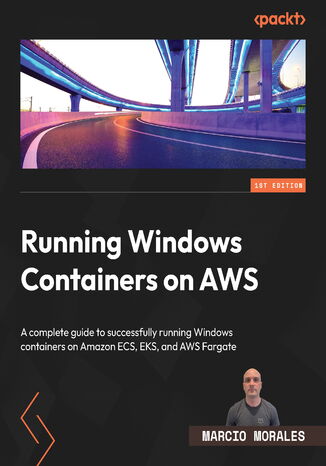












![Russkij jazyk w polskoj auditorii. T. 3. [Język rosyjski w polskiej szkole wyższej. T. 3]](https://static01.helion.com.pl/global/okladki/326x466/e_1p3c.jpg)
